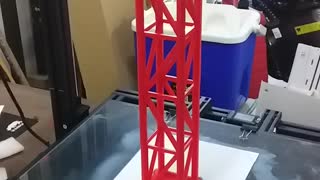Premium Only Content

3D Bacterial Printing with Ravinash Krishna Kumar
The invasion of 3D printing has even infiltrated the world of bacteria. Ravinahs Kumar discusses how this technology provides researchers with a new way to watch bacterial communities interact under a variety of conditions.
Listen and learn
How a 3D-printed bacteria model helps researchers learn more about the community-based system of bacteria under different spatial constraints,
How researchers use ideal material properties for bioprinting to test how stubborn bacterial systems like biofilms evolve and stay almost impenetrable, and
What are some interesting findings such as bacteria sacrificing themselves to release toxins and keep the collective organism safe.
Ravinash Krishna Kumar is a postdoctoral fellow at the University of Oxford. He is working on 3D printing bacteria to both test the potential of this technology and investigate bacterial community interactions. They've been able to print different populations, strains, and species and explore how spatial positions affect their stability and productivity.
In fact, by designating a variety of parameters, they can position clusters of bacteria in defined spatial patterns and make comparisons. For example, they can print out different clusters of E. coli and test how they interact under different conditions on a much smaller scale than previous agar-dependent studies.
This cutting-edge technology, scale, and material allows them to ask a host of new questions. In addition to observing different strains interacting, they can observe how those strains grow when segregated. He adds that they can observe them "consuming local nutrients or sending out diffusible molecules to each other, or touching each other literally, and sending things across to each other."
In other words, his research explores a whole new way to understand bacterial competition and commensalism in spaces similar to natural spaces. This eventually will help researchers treat diseases caused by bacterial growth in biofilms and through mucosa in the human immune system.
Episode also available on Apple Podcasts: apple.co/30PvU9C
-
 38:55
38:55
FGP
2 days agoDeleting Burnout: The Human System Architecture Of Peak Performance With Bogdan Micov
9 -
 55:26
55:26
FlexoGlobal - Your Portal to the Flexographic Industry
4 years agoDo More With 4: Expanded Gamut Printing for Flexo
50 -
 8:23
8:23
DIYEngineering
4 years agoEpisode 057: Monochrome Resin Printing Figurines with the Voxelab!
843 -
 4:25
4:25
WXYZ
5 years ago3D Printing with the Michigan Science Center
30 -
 1:06
1:06
Oscar Steele & Company
5 years ago $0.01 earned3D Printing FLSUN QQ-S
90 -
 0:36
0:36
alexb714
5 years ago3D Printing 1.1
154 -
 0:45
0:45
EntertainmentVideos
4 years agoTwinkle Khanna with Akshay Kumar and Nitara snapped at a clinic | SpotboyE
49 -
 0:21
0:21
JoeV64
4 years ago3D Printing Headset clamp
53 -
 0:15
0:15
JoeV64
4 years ago3d Printing Communication Tower Model 2
54 -
 4:04
4:04
TheSim Art
4 years agoComplete Baby Yoda 3D Printing
89